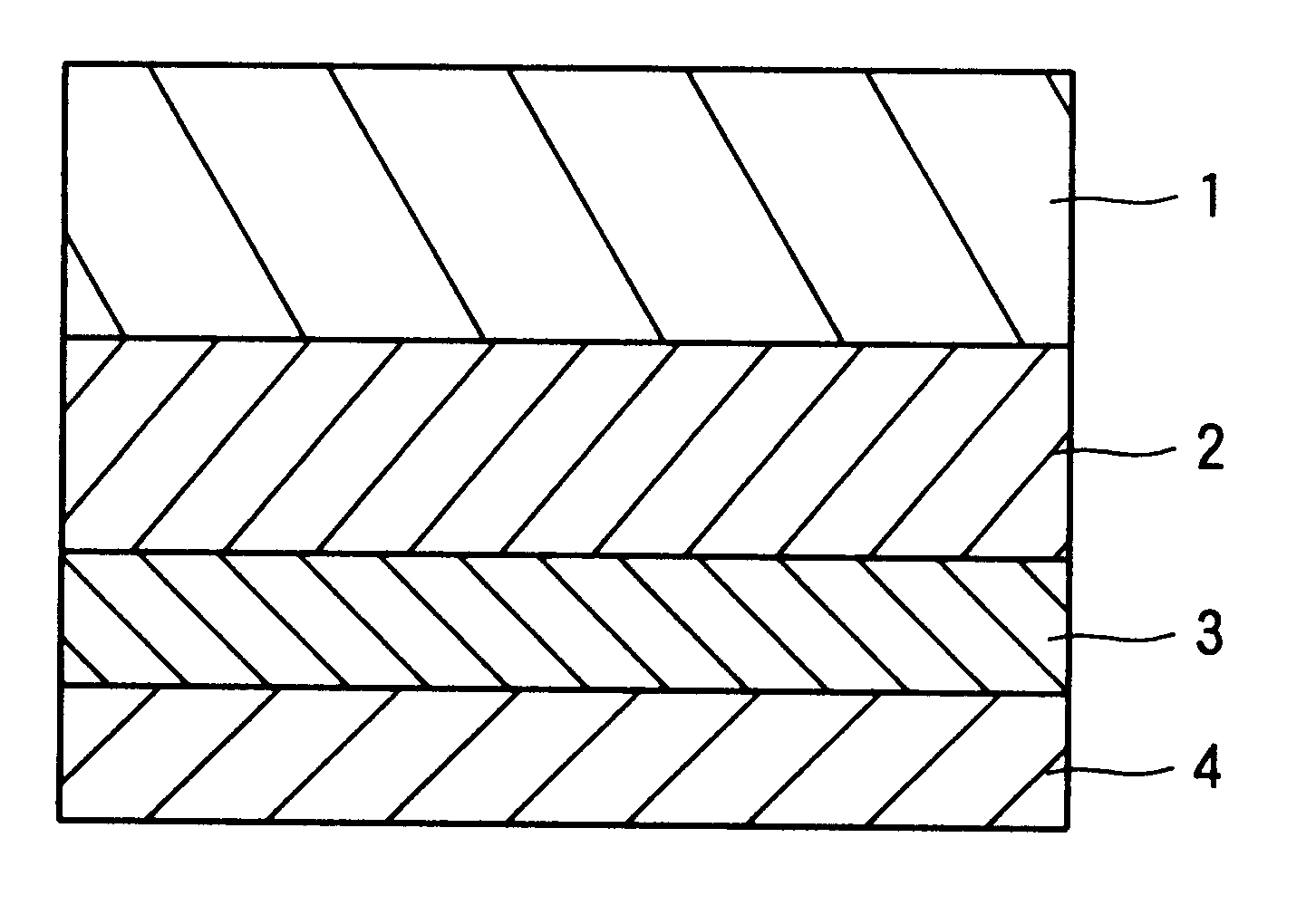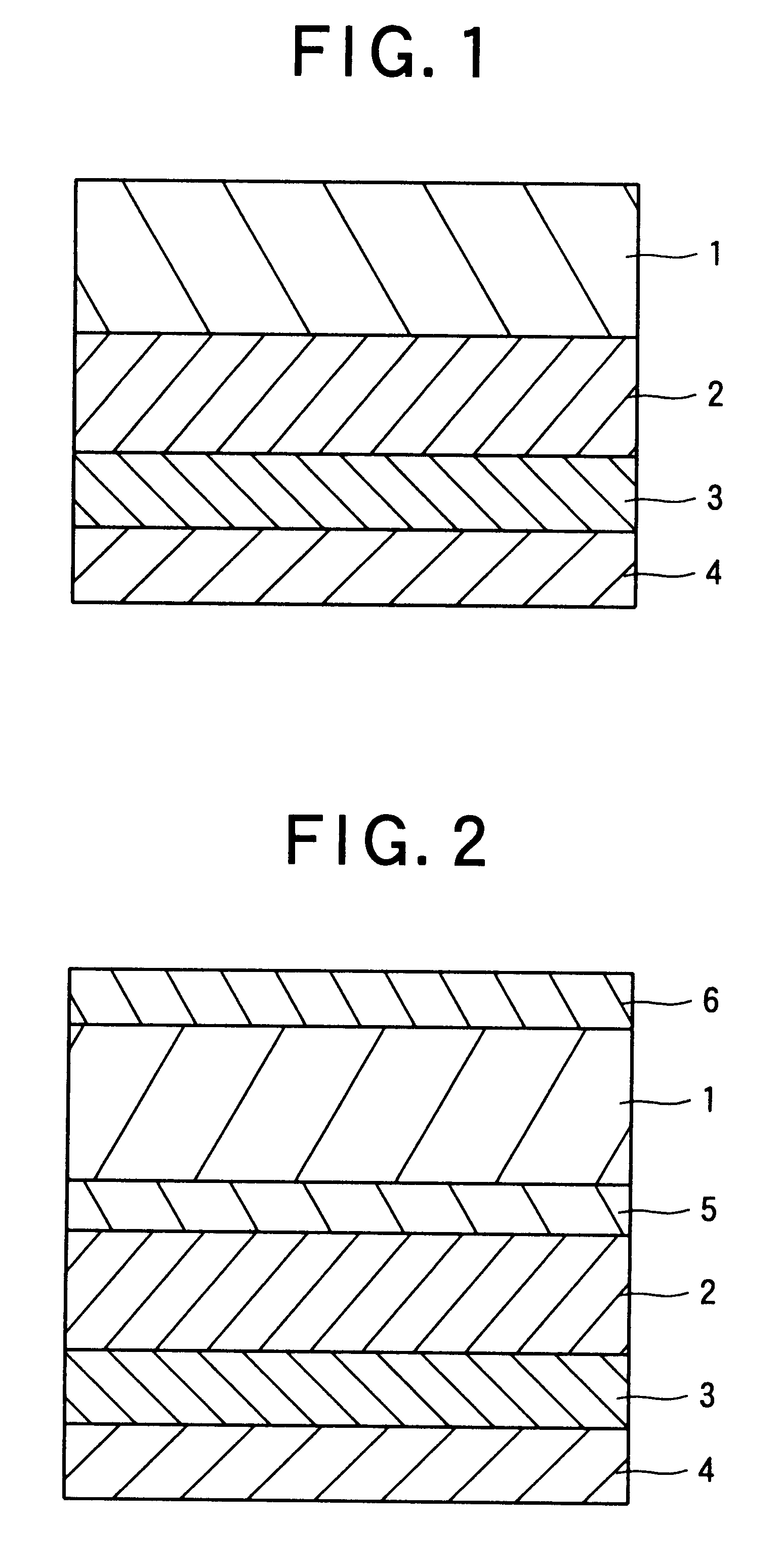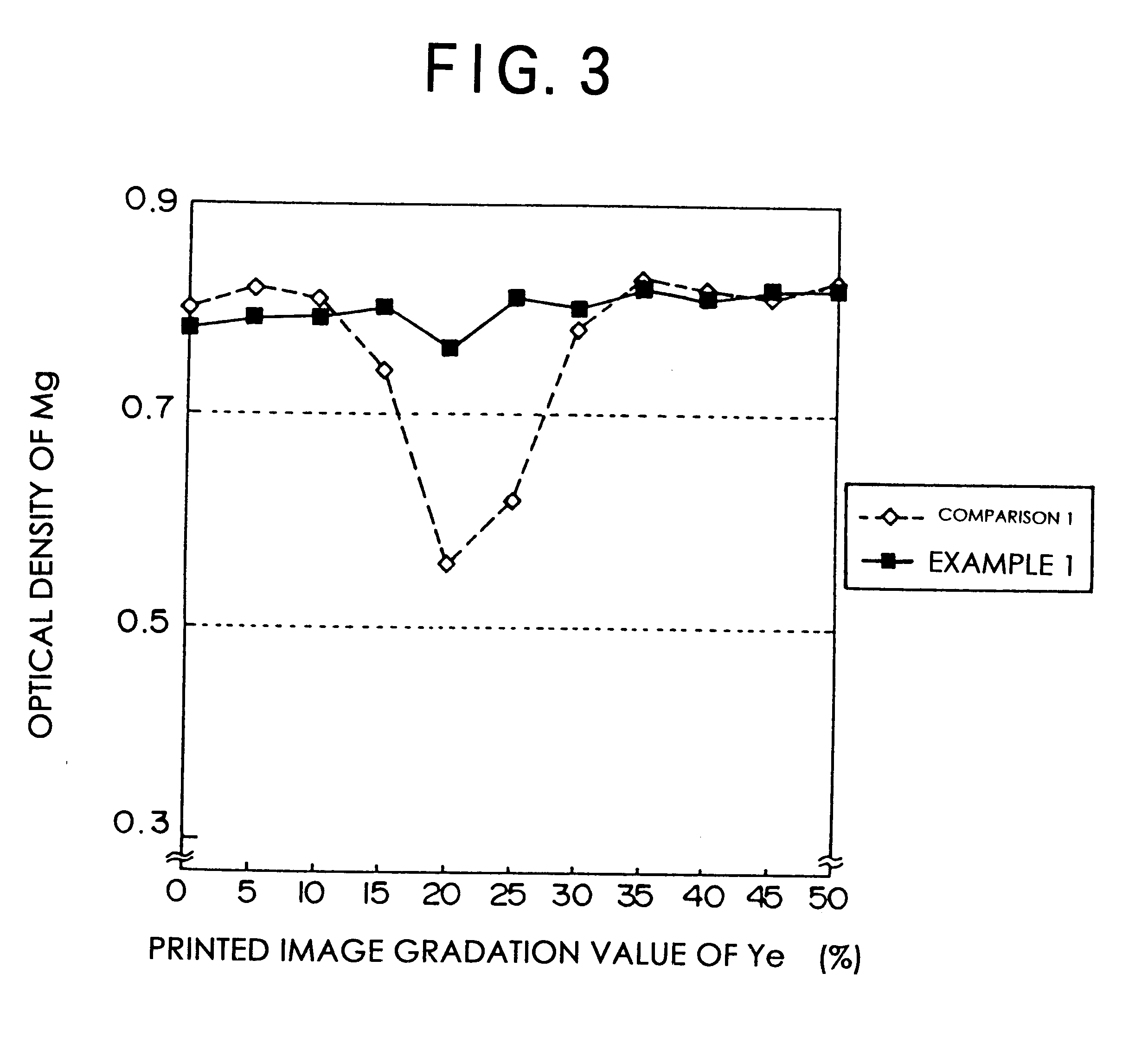Thermal transfer image receiving sheet and method of manufacturing same
- Summary
- Abstract
- Description
- Claims
- Application Information
AI Technical Summary
Benefits of technology
Problems solved by technology
Method used
Image
Examples
example 1
The coat paper having a basis weight of 104.7 g / m.sup.2 (NEW V MATT manufactured by Mitsubish Seishi Co. Ltd.) is used as the substrate. The coating liquid for a foam layer having the following composition is applied on the above substrate by the gravure coating to form a layer having in an coating amount of 25 g / m.sup.2 (in solid component, hereinafter expressed by same manner), then dried at the temperature of 140.degree. C. for one minutes to cause the microsphere to foam, thus forming the foam layer. The composition is expressed by weight parts.
Then, the coating liquid for an intermediate layer having the following composition is applied on the above foam layer by the gravure coating to form a layer in a coating amount of 5 g / m.sup.2, then heated and dried by the hot air dryer to form the intermediate layer.
Then, the coating liquid for a receptor layer having the following composition is applied on the above intermediate layer by the gravure coating to form a layer in a coating ...
example 2
The thermal transfer image receiving sheet of the Example 2 is obtained in the same manner described in Example 1 except the following condition.
The composition of the coating liquid for an intermediate layer is changed to the following, and furthermore, the coating liquid for an undercoat layer having the following composition is applied on the substrate by the gravure coating to form a layer in a coating amount of 5 g / m.sup.2, then dried by the hot air dryer to form the undercoat layer between the substrate and the foam layer. Furthermore, the foam layer in a coating amount of 20 g / m.sup.2 is formed by the gravure coating.
example 3
The thermal transfer image receiving sheet of the Example 3 is obtained in the same manner described in Example 1 except the following condition.
The composition of the coating liquid for an intermediate layer is changed to the following, and furthermore, the coating liquid for an anti-curl layer having the following composition is applied on the opposite side of the substrate with the receptor layer formed by the gravure coating to form a layer in a coating amount of 0.05 g / m.sup.2, then dried by the cool air dryer to form the anti-curl layer on the other side of the substrate.
PUM
| Property | Measurement | Unit |
|---|---|---|
| Size | aaaaa | aaaaa |
| Size | aaaaa | aaaaa |
| Fraction | aaaaa | aaaaa |
Abstract
Description
Claims
Application Information
 Login to view more
Login to view more - R&D Engineer
- R&D Manager
- IP Professional
- Industry Leading Data Capabilities
- Powerful AI technology
- Patent DNA Extraction
Browse by: Latest US Patents, China's latest patents, Technical Efficacy Thesaurus, Application Domain, Technology Topic.
© 2024 PatSnap. All rights reserved.Legal|Privacy policy|Modern Slavery Act Transparency Statement|Sitemap



